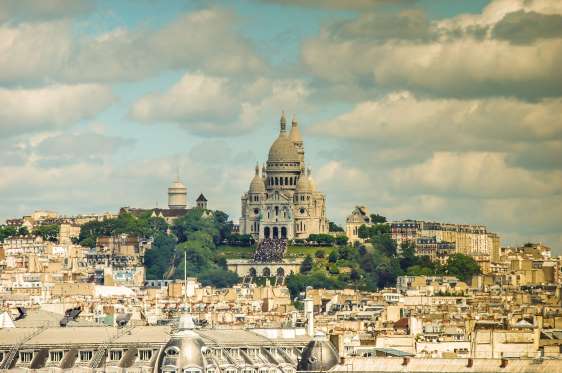Basilique du Sacré-Cœur, a Roman Catholic church, opened in 1914 and is located in the heart of Paris, France. It took seven architects and nearly 40 years to complete the structure.

Built in 1866, the Neue Synagogue is located in Berlin, Germany. The style of architecture for the structure is labeled as Moorish Revival, a form that reached its height of popularity after the mid-19th century.

Designed by Brazilian architect Oscar Niemeyer, the Cathedral of Brasília is situated in the capital of Brazil. The structure is home the Roman Catholic population in the city.

Completed in 1619, Isfahan’s Sheikh Lotfollah Mosque is one of the most beautiful structures in Iran, if not the entire Middle East.

The Church of the Transfiguration, which was built in 1714, is located within an archipelago in the southwestern section of Lake Onega, in northern Russia. In 1990, the structure was added to the UNESCO World Heritage List.

The Melaka Straits Mosque, which was completed in 2006, is located on a man-made island in Malaysia.

The Chapel of the Holy Cross is a towering edifice, nestled between red rocks in Sedona, Arizona. The Roman Catholic chapel was completed in 1956.

Popa Taungkalat monastery is located on the slopes of Mount Popa, an extinct volcano in Myanmar. In order to reach the monastery, visitors must climb up 777 stairs.

Subotica Synagogue, which was built in 1902 in the architectural style of Art Nouveau, is located in Vojvodina, Serbia.

Sagrada Família, designed by Catalan architect Antoni Gaudí, is located in Barcelona. Spain. The design, which was inspired by nature, is noticeable for any visitor, as the structure includes virtually no straight lines, while the interior is made up of tree-like columns.

Located in Greece, the Monastery of Rousanou is a cathedral with roots dating back to the 16th century. In comparison to the surrounding rocks, the rock that the monastery was built on is situated at a lower elevation, making it much more accessible for its patrons.

Situated in Pattaya, Thailand, the Sanctuary of Truth is an all-wood religious temple.

Abu Dhabi’s Sheikh Zayed Mosque is a spectacularly symmetrical structure that many come to for prayer and inspiration. Designed by the Syrian architect Yousef Abdelky, the mosque was completed in 2007.

The Great Synagogue of Florence in Italy is one of the largest synagogues in south-central Europe. Completed in 1882, it was designed in the Moorish Revival style of architecture.

Thailand’s Wat Rong Khun (also known as the White Temple) is a stunning sight for any visitor. Although it’s one of roughly 33,000 Buddhist temples in Thailand, it certainly has its own distinct flair, as the interior includes such murals as Michael Jackson, Neo from The Matrix, and creatures from Avatar.

Completed in 1372, Myanmar’s Shwedagon Pagoda is a sight like no other. The sacred Buddhist temple is composed of bricks covered with gold plates.

New Delhi’s Bahá’í Lotus Temple averages 8,000 to 10,000 visitors each day. Completed in 1986, the structure cost roughly $10 million to build.

The Blue Mosque in Istanbul, Turkey, is one of the most recognizable structures in the world. Named after the blue tiles surrounding the walls of interior, the structure was completed in 1616. The mosque contains the tomb of Ahmed I, the sultan of the Ottoman Empire from 1603 until his death in 1617 (and the man who commissioned the Blue Mosque to be built).

Prague’s Jubilee Synagogue, which is located on Jerusalem Street, was completed in 1906. Designed by the Austrian architect Wilhelm Stiassny, the beautiful structure was crafted in the Art Nouveau architectural style.












